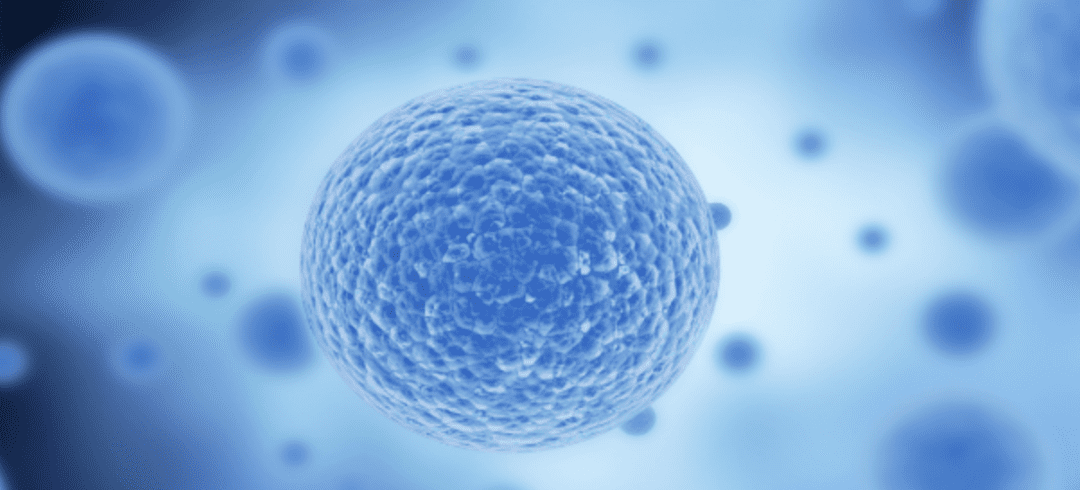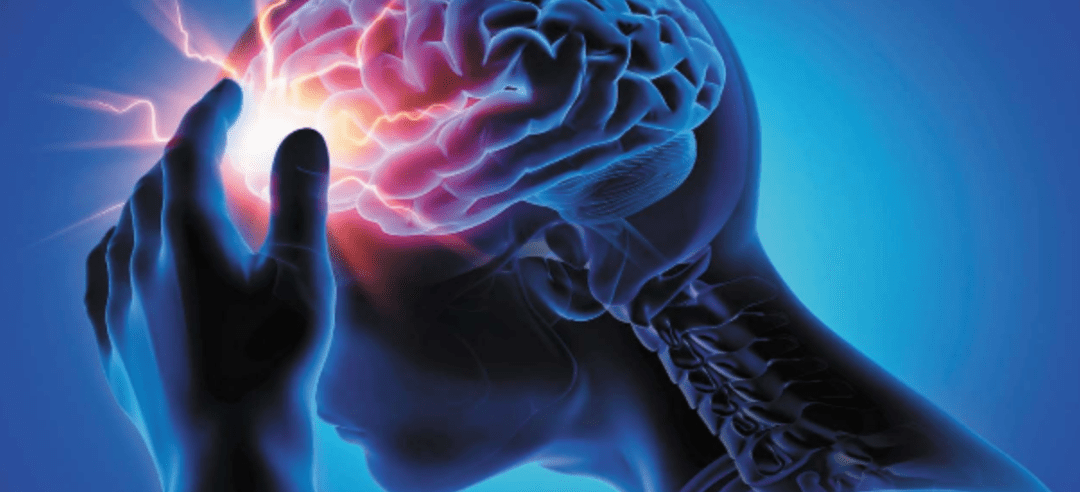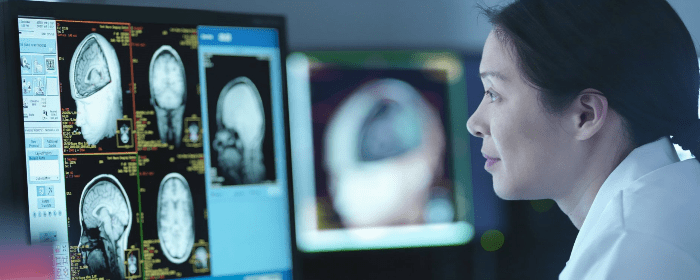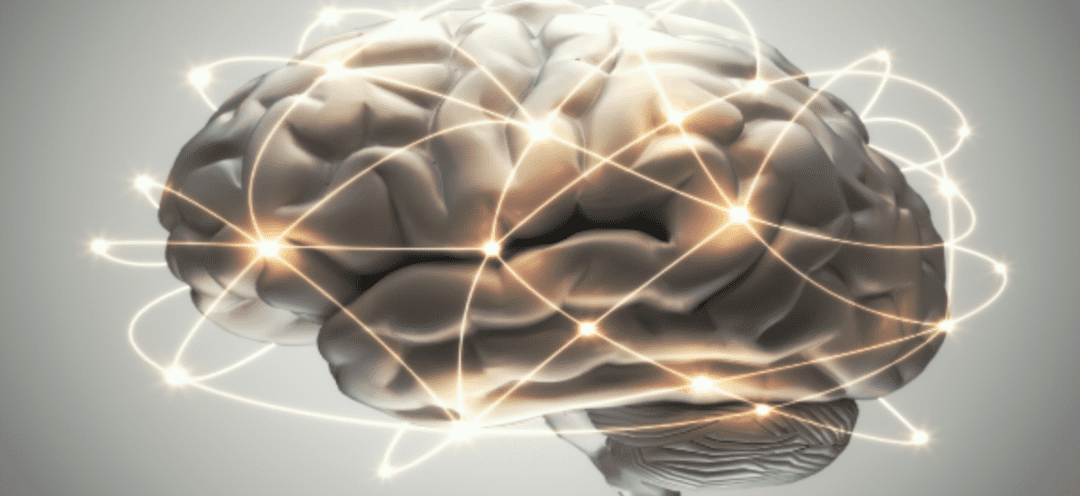
by Stemedix | Jan 10, 2022 | Stem Cell Therapy, Traumatic Brain Injury
TBIs, or traumatic brain injuries, are typically one of the most challenging types of medical ailments to treat. This is due to the sheer complexity of the human brain. Here we talk about how to heal traumatic brain injuries.
Fortunately, stem cell therapy may provide medical professionals with a viable treatment option when encountering patients suffering from TBIs. Stem cells are unique cells that are capable of transforming into other types of cells, including those present within the brain.
While stem cells have shown great promise when used to treat other types of soft tissue injuries, can they help heal traumatic brain injuries? Thus far, researchers have not found a definitive answer. However, initial data shows that stem cell therapy may have a positive impact on TBI patients.
Types of Traumatic Brain Injury
Before we discuss how stem cell therapy may benefit individuals that have suffered a TBI, let’s briefly recap the various types of traumatic brain injuries.
Concussions
The most common type of traumatic brain injury is concussions. Concussions can occur when a person’s head collides with another individual, a fixed object, or a moving object. A prime example of an injury-causing event is when a football player’s helmet hits the helmet of another player or the turf. Concussions are characterized by a loss of consciousness, an altered mental state, and headaches.
Penetration Injuries
A less common but still frequent type of TBI is caused by a penetration injury. These injuries occur when a foreign object pierces the skull and damages the brain. Penetration injuries can be caused by sharp objects, bullets, and shrapnel.
Diffuse Axonal Injuries
The third class of TBI is referred to as a diffuse axonal injury. This type of injury occurs when a person experiences rapid deceleration or acceleration. Diffuse axonal injuries are most likely to occur during motor vehicle accidents.
How Stem Cells May Help
Every year, approximately 1.5 million people suffer from TBIs in the U.S. alone. Roughly 230,000 people are admitted to the hospital and survive their injuries. Of these, about one-third (80,000–90,000) suffer from some sort of long-term disability.
In the past, clinicians focused on managing the many symptoms of TBIs via the use of medications and rehabilitative therapies. However, stem cell therapy has become a safe and natural alternative treatment option for many different neurodegenerative conditions, including TBIs.
Early research suggests that stem cell therapy may be able to:
- Improve cognitive function
- Improve appetite
- Improve mood and stamina
- Decrease chronic pain
- Increase energy
If you or a loved one is suffering from a TBI injury, stem cell therapy might be able to help mitigate or improve symptoms. If you would like to learn more contact us today and speak with a care coordinator.

by Stemedix | Jan 3, 2022 | Traumatic Brain Injury, Stem Cell Therapy
A question we get a lot is what is traumatic brain injury? Traumatic brain injury (or TBI) is usually caused by a violent blow to the head or body. An object piercing the brain tissue, such as may happen in an automobile accident, can also cause TBI. Most traumatic brain injuries are mild concussions that do not require hospitalization, but sadly, TBI does contribute to nearly 50,000 deaths a year in the U.S. Treatments for traumatic brain injury depend on the severity of the injury. Therapies may include emergency treatment, medications, rehabilitation, and stem cell therapy.
Inflammation is the body’s normal response to injury, but the hard skull around the brain prevents outward swelling when it’s injured. Instead, pressure builds up inside the skull, and this pressure can cause even further injury.
Interruption in communication patterns between the brain’s neurotransmitters creates an imbalance of the delicate chemistry needed for normal function. If the injury is mild, normal function may resume when the brain heals and inflammation recedes. But if the pressure is prolonged or the injury is more severe, complications can be life-altering.
The Symptoms of TBI
The term “traumatic brain injury” sounds severe, and in some cases, it can be. However, traumatic brain injury is also the correct term for describing mild concussions that don’t appear to be concerning immediately after the event. Symptoms and complications related to TBI may appear days or even weeks after the injury. That is why all TBIs should be considered serious incidents until more information becomes available.
Symptoms of a mild TBI may include:
- Headache,
- Fatigue or drowsiness
- Nausea/vomiting
- Speech problems
- Dizziness
- Loss of balance
- Blurred vision
- Ringing in the ears
- Strange taste in the mouth
- Loss of smell
- Sensitivity to light or sound
- Loss of consciousness for a few seconds or minutes
- Feeling confused, disoriented
- Problems with memory or difficulty concentrating
- Mood swings
A more serious TBI may also cause convulsions, clear fluids draining from ears or nose, weakness in toes and fingers, or dilation of one or both pupils.
Seek medical care if you or someone you know exhibits any of the above signs after a fall or some other type of accident that involves a blow to the head. Children are especially at risk for long-term complications of TBI and should be evaluated immediately.
Can Regenerative Medicine Help TBI?
Regenerative medicine, also known as stem cell therapy, has shown potential for managing a range of neurodegenerative disorders, including traumatic brain injury. While it is still considered experimental, studies on stem cell therapy show promise for its ability to replace damaged brain cells with healthy new cells and potentially restore or improve brain function. If you would like to learn more contact a care coordinator today!

by Stemedix | Jun 14, 2021 | Traumatic Brain Injury, Stem Cell Therapy
Traumatic brain injury (TBI) is an extremely challenging condition for many patients to face. According to the Centers for Disease Control and Prevention (CDC), from 2006 to 2014, the number of TBI-related emergency department visits, hospitalizations, and deaths increased by 53%. Those who survive after a TBI may experience irreversible neurological symptoms that can sustain for the rest of their lives. However, there is some evidence that suggests that stem cell therapy may help in the treatment of TBI. There are many benefits of Stem Cells.
How Stem Cells May Benefit A Patient With A Traumatic Brain Injury
Mesenchymal stem cells have the ability to differentiate into any type of cell and tissue. They can become any type of cell in the body, including ones that do not normally replicate. For instance, you often hear that you have the same number of nerve cells since birth. Recent evidence suggests that neurons can regenerate in certain cases, but, the rate of regeneration is not sufficient to restore some lost functions after irreversible damage (e.g., TBI, stroke).
For this reason, scientists are studying stem cells since they have the potential to differentiate, regenerate, and repair, to help patients with neurological conditions, such as multiple sclerosis, strokes, and traumatic brain injuries.
What Does Science Say About Stem Cells And TBI?
In recent decades, mesenchymal stem cells obtained from the bone marrow, umbilical cord, and adipose tissues demonstrated impressive potential in the management of TBI. There have been clinical studies that describe the administration of stem cells via a lumbar puncture and/or intravenous (IV) methods to patients with TBI. After the evaluation of these patients using imaging techniques (i.e., MRI, fMRI), lesions in the brain showed improvements after each treatment session.
Today, dozens of clinical trials are still being conducted to get a deeper understanding of the effects of stem cell therapy on patients with TBI. With that said, and based on the available results, patients with TBI conditions may find this treatment method as an encouraging option. Research will continue as scientists keep studying this new advancement in regenerative medicine.
Stem cells have an incredible ability to divide into any type of tissue, opening the door for endless therapeutic options in not only neurodegenerative conditions, such as TBI but for autoimmune and orthopedic conditions as well. If you would like to learn more then contact a care coordinator today!

by admin | May 14, 2021 | Stem Cell Therapy, Mesenchymal Stem Cells, Stem Cell Research, Traumatic Brain Injury
According to the CDC, in 2019, traumatic brain injury (TBI) contributed to nearly 61,000 deaths in the United States alone[1]. While there are several clinical treatments designed to address the neurological dysfunction after sustaining a TBI, including hyperbaric oxygen, brain stimulation, and behavioral therapy, none appear to produce satisfactory or lasting results.
In recent years, several studies have demonstrated the therapeutic potential of various stem cells, including mesenchymal stem cells (MSCs), neural stem cells (NSCs), Multipotent adult progenitor cells (MAPCs), and endothelial progenitor cells (EPCs) in the treatment of neurological impairment resulting from TBI. Specific benefits of these stem cells observed throughout these studies demonstrate that exogenous stem cells have the ability to migrate to the site of damaged brain tissue, help to repair damaged tissue, and significantly improve neurological function.
In this article, Zhou et al. review recent findings on the role, effects, deficiencies, and related mechanisms of the various stem cells being used as therapeutic agents in the treatment of TBI.
Examining numerous studies occurring between 2010-17 and exploring various TBI models and the roles of different stem cells in animal models, the author’s general summary is that the use of stem cells demonstrated some form of measurable improvement in every study reviewed. As a reference, specific observed benefits included improved integrity of the blood-brain barrier; improved neurological function, social interaction, and motor performance; enhanced neurovascular repair and recovery; and enhanced cognitive and spatial learning, information retention, and memory retrieval.
The authors point out that although there appears to be a large amount of research exploring the complexity of pathophysiology and the application of stem cell therapy for treating TBI, many problems still exist and must be addressed before the best method for TBI recovery can be determined.
Specifically, while there have been several clinical studies exploring the role of stem cells in the role of TBI treatment and recovery, and while most demonstrate promising results, the studies have almost universally been completed on mice and/or rats, contained human sample sizes that are not large enough, or failed to include a control group. As a result, Zhou et al. call for further study, including multi-center long term follow-up and randomized prospective trials that examine the safety of stem cells, route of injection, the time of injection, and the specific mechanisms as a way to identify the appropriate and effective stem-cell-based therapeutic treatment options for those suffering from various types of TBI.
Source: (2019, August 13). Advance of Stem Cell Treatment for Traumatic Brain Injury. Retrieved from https://www.ncbi.nlm.nih.gov/pmc/articles/PMC6700304/
[1] (2021, May 12). Get the Facts About TBI | Concussion …. Retrieved from https://www.cdc.gov/traumaticbraininjury/get_the_facts.html

by Stemedix | May 3, 2021 | Neurodegenerative Diseases, Stem Cell Therapy, Traumatic Brain Injury
In neurodegenerative conditions and cases of brain damage such as traumatic brain injury (TBI), the goal of treatment is usually to manage symptoms and prevent or slow the rate of further damage. Yet, ongoing research suggests stem cells could play an important role in creating new neurons, potentially resulting in repair of central nervous system damage and potentially regrow brain tissue. While the science is still in its infancy, there is evidence to suggest stem cell therapy could help to potentially restore lost brain function.
Just until a couple decades ago, scientists were under the impression that the brain and spinal cord could not rebuild themselves once cells were lost. Yet, in the mid-1990s, neuroscientists discovered that the brain could create new neurons in certain circumstances, which arise from neural stem cells. As undifferentiated cells, the stem cells could give rise to many different brain cell types, including neurons, which carry messages throughout the nervous system.
Further research has supported the idea that neurons can regenerate. For instance, in 2003, research was published which showed improvements in paralyzed rats who were exposed to a virus which caused symptoms similar to that of amyotrophic lateral sclerosis (ALS). Mice that had been previously paralyzed were able to regain some mobility after receiving stem cell injections, and the stem cells took on the characteristics of mature motor neurons.
Researchers have also been exploring stem cell therapies to help treat Parkinson’s disease. The goal is to rebuild the central nervous system through stem cell implantation. While levodopa is the go-to treatment to help regulate dopamine levels which are affected in PD, the drug’s efficacy tends to wear off over time, and its side effects increase. Some researchers have investigated the use of fetal stem cell tissue for PD patients, but lack of standardization and challenges in acquiring donor tissue have been barriers to ongoing research efforts.
With that said, stem cells from umbilical cord blood and adult adipose (fat) or bone marrow can also be coaxed to display many protein markers similar to those found in nervous system cells. It’s unclear whether these cells will ultimately be able to give rise to functioning neurons, but researchers continue to make progress.
Ultimately, there is much left to discover when it comes to the potential role of being able to regrow brain tissue and regenerative therapies such as stem cells in neurodegenerative conditions and brain injury. What we’ve already seen is promising, however. As experts continue to develop a deeper understanding of how stem cells and neurons can work together, patients with these challenging conditions will likely continue to benefit from evolving treatment options. If you would like to learn more then contact a care coordinator today!

by admin | Mar 26, 2021 | Peptides, Traumatic Brain Injury
With nearly 1.5 million traumatic brain injuries (TBI) occurring each year in the United States and over 69 million more cases of TBI[1] occurring worldwide, TBI continues to be one of the leading annual causes of mortality and morbidity. Carrying with it an annual estimated cost exceeding $56 billion, there has yet to be a viable, effective treatment option for TBI.
As researchers continue to search for an effective pharmacological-based treatment for TBI, recent preclinical studies have found endogenous neurorestoration occurring after TBI. Treatments developed in an effort to improve and/or promote the post-TBI neurorestorative recovery process have also shown to be promising.
Of the potential regenerative peptides identified as part of the TBI recovery efforts, thymosin beta 4 (Tβ4) has been found to exhibit several interesting and promising benefits, including pro-survival and pro-angiogenic properties, protecting tissue against damage, and promoting tissue regeneration.
In addition, previous studies exploring Tβ4 as a potential TBI-treatment option have demonstrated reduced inflammation, improved remyelination, and improved recovery in animal models studying such effects. As a result, the authors of this brief conclude that these observed benefits indicate Tβ4 to hold tremendous potential as a treatment option for TBI.
Since there isn’t one established animal model that can clinically reproduce the significant and multi-layered deficits in cognitive and motor performance experienced as a result of TBI in humans, most TBI studies rely on the controlled cortical impact, or CCI, model to evaluate the efficacy of potential TBI treatments.
Early Tβ4 Treatment May Reduce Cortical lesion Volume and Improve Functional Recovery After TBI
Using the CCI model to evaluate the efficacy of early Tβ4 treatment on spatial learning and sensorimotor functional recovery in rats, the authors demonstrated that rats receiving (Tβ4) treatments 6, 24, and 48-hours after TBI demonstrated significant improvements, especially when compared to rats treated with a vehicle control (in this case, saline). Rats in the Tβ4-treated group also demonstrated reduced hippocampal cell loss and reduced cortical lesion volume at a rate of up to 30%.
As a result of these findings, the authors suggest Tβ4 may encourage neuroprotection even when treatment is provided up to 6-hours after the occurrence of a TBI.
Tβ4 Treatment Provided 24-Hours After TBI Injury May Improve Functional Recovery, But Not Alter Cortical Lesion Volume
The primary intent of any neuroprotective TBI treatment is to reduce the size of established lesion(s). Researchers note that a major, but recurring, limitation of TBI-based treatments is the short timeframe between injury and need for treatment. As such, researchers point out that most preclinical TBI studies found the treatment to be effective only when administered within several hours after experiencing a TBI.
However, when using the CCI model, researchers noted the ability to improve neurological recovery without altering cortical lesion volume; these improvements were observed even when administering Tβ4 treatment more than 24-hours after injury.
Specifically, rats receiving Tβ4 treatment initiated 24 hours post-injury demonstrated significantly reduced cell loss as well as improvement in spatial learning and sensorimotor functional recovery when compared to TBI rats receiving saline treatments.
Tβ4 Treatment Provided 24-Hours After TBI Injury May Promote Neurogenesis
Substantial evidence has repeatedly indicated that all mammals, including humans, have the ability to generate new neurons. Specifically, these neurons originate from neural stem cells in the adult brain and appear to replace neurons that die regularly and in specific areas of the brain.
Considering this information, scientists introduced bromodeoxyuridine (BrdU), a thymidine analogue, into the DNA of dividing cells with the goal of improving neurogenesis. When compared to sham controls, this process demonstrated a significant increase in the presence of BrdU-positive cells 35 days after TBI.
Additionally, Tβ4 treatment appeared to further increase the number of BrdU-positive cells when compared to saline controls. These findings were further supported by the authors’ data confirming neurogenesis increases in TBI rats receiving Tβ4 treatment. The authors suggest that these findings indicate Tβ4 treatment promotes new cells to differentiate into brain-specific neurons.
Tβ4 Treatment Provided 24-Hours After TBI Injury May Promote Angiogenesis
Research demonstrates normal adult brains contain a stable vascular system; however, the vascular system becomes active in response to several pathological conditions, one of them being TBI. Findings indicate that Tβ4 treatment applied to specific areas of the brain associated with TBI, including the cortex, demonstrate significant increases in the observed vascular density of these specific areas, especially when compared to a control group receiving a saline treatment.
The presence of increased vascular density in these areas of the brain is thought to be closely related to improved recovery from TBI and specifically enhanced neurogenesis and synaptogenesis. As a result, the authors of this brief suggest further study to attain a better understanding of neurovascular molecular mechanisms with a specific focus on developing angiogenic and neurogenic therapies for TBIs.
Considering the above findings pertaining to the potential benefits of Tβ4 treatment for TBI and the fact that administration of Tβ4 has proven safe and well-tolerated in both animals and humans, the authors call for further investigation of molecular mechanisms that contribute to enhanced Tβ4-mediated neuroprotection and neurorestoration.
Source: (n.d.). Neuroprotective and neurorestorative effects of Thymosin beta 4 …. Retrieved February 4, 2021, from https://www.ncbi.nlm.nih.gov/pmc/articles/PMC3547647/
[1] “Estimating the global incidence of traumatic brain injury – PubMed.” 1 Apr. 2018, https://pubmed.ncbi.nlm.nih.gov/29701556/.







 St. Petersburg, Florida
St. Petersburg, Florida
